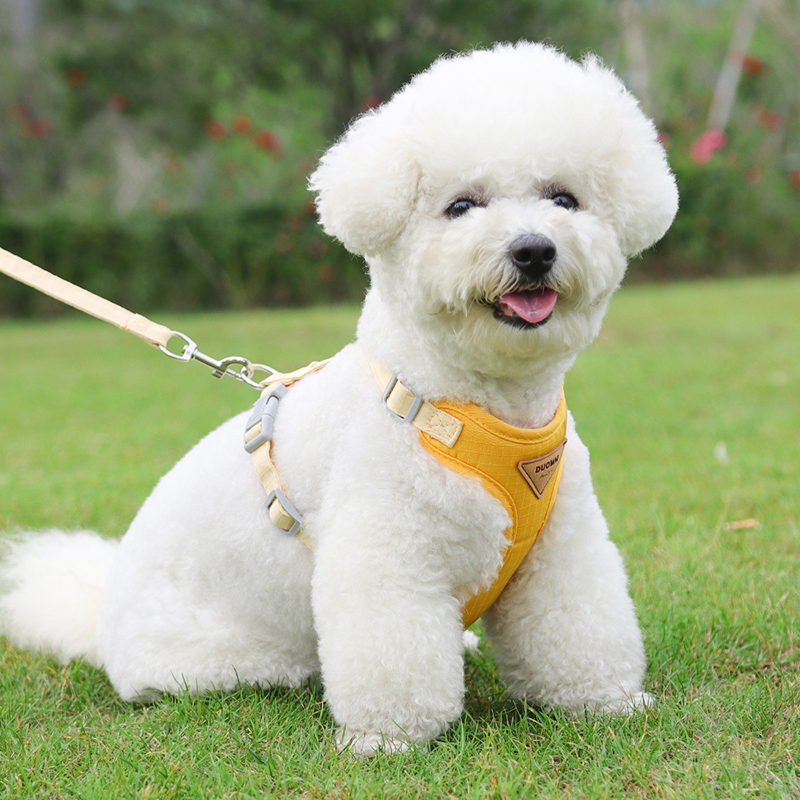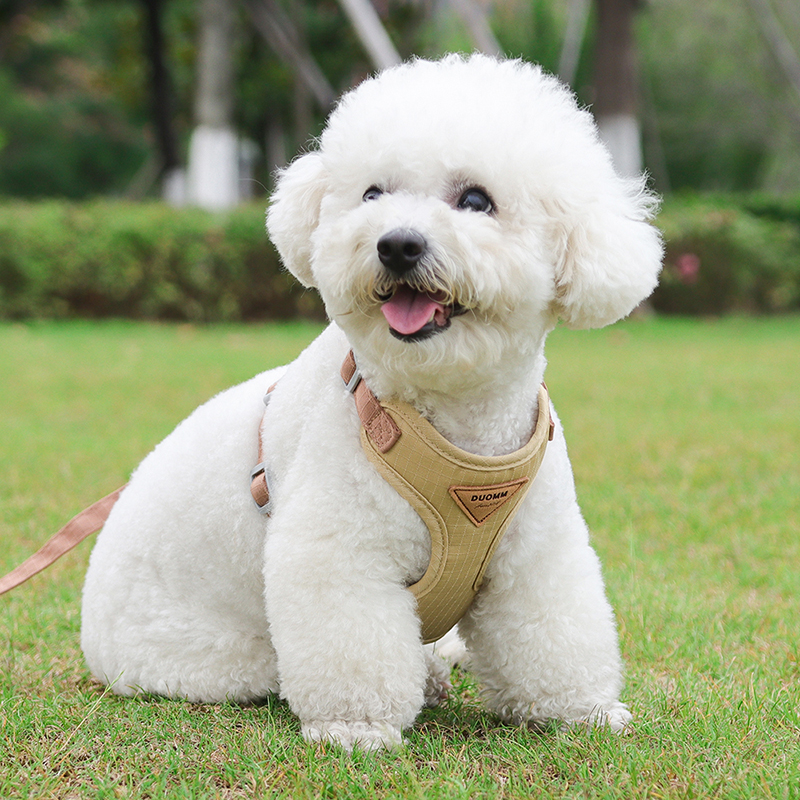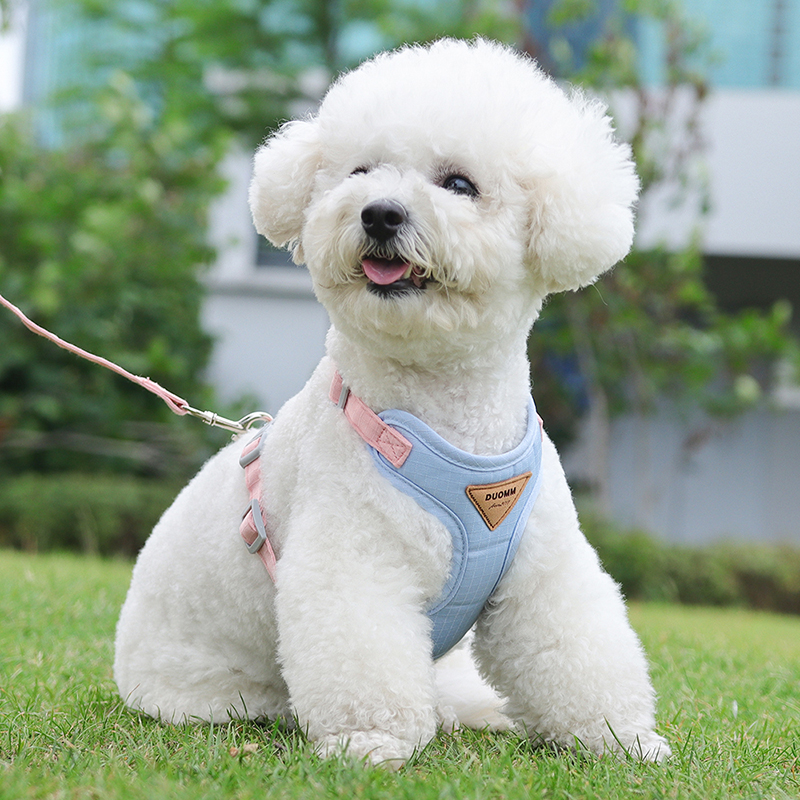Introduction to Dog Running Harnesses
Taking your dog on a run can be a great experience. A proper dog running harness can make it better. A harness is crucial for control and safety. Your furry friend needs comfort too. There are harnesses designed for leisurely walks. But a dog running harness has specific traits. It offers support and ensures your dog’s well-being during runs. Knowing the key features is important. From fit to materials, many factors come into play. We will explore these to help you choose the perfect harness. Strap in, and get ready to learn about harness essentials. And how they can make running with your pup a breeze.

Essential Features of a Dog Running Harness
Choosing the perfect dog running harness requires understanding its essential features. The right features ensure safety, comfort, and longevity. Here’s what to consider.
Fit and Adjustability
A good fit is key in a dog running harness. It shouldn’t be too tight or too loose. Adjustable straps are a must. They allow for a snug fit without restricting movement. Look for a harness that offers multiple points of adjustment. This ensures a customized fit for your dog’s unique shape.
Material and Durability
The harness material should withstand the wear and tear of running. Nylon is a popular choice. It’s strong and dries quickly. Padding adds comfort but shouldn’t be too bulky. It can limit movement and cause overheating. Durability is also critical. The harness should hold up after repeated use and washing. Check stitching and hardware. They must be of high quality to resist breaking during a run.
Reflective Elements for Safety
Safety is paramount when running with your dog. Reflective elements are important, especially in low light. They make your pet visible to others. This is crucial during early morning or evening runs. Reflectors on straps or stitching can save lives. They ensure cars and bikes see your dog. Enhance your pet’s visibility with a reflective dog running harness.
Types of Dog Running Harnesses
Finding the right type of dog running harness is essential. Different designs cater to various needs. Let’s look at the two main types.
Standard Harnesses vs. Running-Specific Designs
Standard harnesses are for everyday activities. They may not suit the intensity of a run. A running-specific design will have features tailored for active use. These often include more padding and support. They also can have built-in hydration pockets. When choosing, consider your dog’s running frequency and intensity.
No-Pull Harnesses for Runners
No-pull harnesses are great for dogs that tend to tug. They discourage pulling without causing discomfort. These harnesses often have a front attachment point. It redirects the dog’s attention towards you when they try to pull. This can make running more enjoyable for you both. Remember, proper training is essential for best results with no-pull harnesses.
How to Measure Your Dog for a Running Harness
Choosing the right size dog running harness is crucial. It ensures comfort and safety during runs. Here’s a step-by-step guide to get the perfect fit for your furry friend:
- Measure the Neck: Place a tape measure around the base of your dog’s neck. Record the circumference. Consider some breathing space but keep the measure snug.
- Measure the Chest: Find the widest part of your dog’s chest, just behind the front legs. Circle the tape around this part and note the size. This is the chest girth, often the key measurement for a harness.
- Measure the Length: Measure from your dog’s neck to the base of their tail. This adds insight into the harness size needed.
- Check the Weight: Some harnesses list weight guidelines. Know your dog’s weight to use as a reference.
- Consult Size Charts: Each dog running harness brand might have different sizing. Compare your measurements with the brand’s size chart.
- Consider Growth: If you have a puppy, remember they will grow. Plan for a harness that can adjust to their changes.
Once you have these measurements, you’ll be ready to find a dog running harness that fits your pet like a glove. Remember that an ill-fitting harness can lead to discomfort or escape. Recheck your dog’s size every few months, especially if they are young or experiencing weight changes.

The Importance of Comfort and Freedom of Movement
When choosing a dog running harness, comfort and freedom of movement are crucial. Let’s explore why.
Comfort for Your Dog is Key
A comfy harness makes runs enjoyable for your pet. Look for soft padding and breathable fabrics. These elements help prevent rubbing and discomfort. A happy dog is more willing to run with you. Ensure the harness doesn’t pinch or restrict breathing.
Freedom of Movement for an Active Lifestyle
Your dog needs to move freely while running. A restrictive harness can hinder their natural gait. It can also lead to potential injuries. A harness that allows full leg motion is essential. This way, your dog can run, turn, and play without any hindrance.
With the right harness, your dog should barely notice they’re wearing one. They’ll be free to enjoy the outdoors alongside you. Remember, a comfortable and unrestricted pet is a happier and healthier running partner.
Top Considerations When Buying a Running Harness
When shopping for a dog running harness, some top considerations should guide your choice. Beyond fit and durability, you must take into account your dog’s size and breed, as well as the weather and climate you’ll be running in. These factors greatly influence the type of harness you’ll need to keep your furry companion safe and comfortable.
Size and Breed Specifics
Different breeds and sizes of dogs require different types of harnesses. For smaller breeds, lightweight and less restrictive harnesses are appropriate. They prevent discomfort and do not weigh them down. Larger breeds may need stronger harnesses that can handle more force. Particularly active or muscular dogs benefit from harnesses with more coverage and support. Remember, a Chihuahua and a German Shepherd will not have the same harness needs. Consider your dog’s breed and their specific physical characteristics when selecting a running harness.
Climate and Weather Adaptability
Your running route’s climate and weather conditions matter too. If you run in hot and humid areas, look for harnesses made with breathable fabrics. These help prevent overheating and ensure your dog stays comfortable. For colder environments, consider harnesses that provide some warmth. Yet, they should not cause your dog to become too hot while active. In rainy locales, a harness with waterproof materials will keep your dog dry and comfy.
Selecting a dog running harness requires thought and care. Keep in mind your pet’s size, breed, and the environment you’ll be in. These considerations ensure a pleasant running experience for both you and your dog. Always aim for a perfect balance between comfort, safety, and adaptability.
Tips for Introducing Your Dog to a New Harness
Introducing your dog to a new dog running harness might take patience and positive reinforcement. Here are some tips to help your dog adjust to their new gear, ensuring a smooth transition.
Start with Familiarization
Let your dog sniff and explore the new harness. Place it near their bed or feeding area to create a positive association.
Keep Initial Sessions Short
During the first few tries, keep the harness on for just a few minutes. Gradually increase the duration as your dog gets used to it.
Use Treats and Praise
Offer treats and praise when you put on the harness. Repeat this when you remove it. This builds positive associations.
Ensure a Proper Fit
Make sure the harness fits well from the start. A comfortable harness is key to a positive experience.
Practice Inside
Let your dog wear the harness indoors first. This helps them get comfortable in a familiar environment.
Be Patient
Some dogs may take longer to adjust. Don’t rush the process. Patience leads to better long-term results.
Incorporate the Harness into Play
Incorporate the harness during playtime. It helps your dog associate it with fun activities.
By following these tips, you can help your pet adjust to their new dog running harness with ease. Remember, each dog is unique. What works for one may not work for another. Monitor your dog’s response and adjust your approach as needed.
